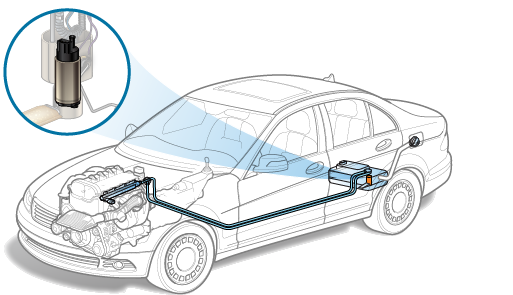Blog

Why Fuel Pump Replacements Can Be Tricky
Fuel pumps are designed to transfer fuel from the fuel tank to the engine fuel management system. Fuel pumps only create flow from the tank to the fuel rail. However, the size of the lines and restrictions cause the fuel to create pressure.
When the fuel pressure is low, the symptoms are that either a fuel pump if failing or a fuel filter is clogged up.
Most of the time fuel filters get plugged due to lack of maintenance. Most people don’t realize that the fuel filter needs replaced due to the mineral deposits drawn into the fuel tank when fueling at a gas station.
Most modern vehicles today have a fuel filter and fuel pump as one unit making it to where the fuel pump must be replaced to change the filter.
Changing a fuel pump can be tricky. On older vehicles, the fuel pump was located on the engine block and usually was relatively easy to access. On the vehicles today, the fuel pump is located in the fuel tank making it to where the fuel tank must be removed to switch out the fuel pump.
When removing the fuel pump from the fuel tank, there is usually a float on the end of the pump. This can be tricky when removing. Just pull up on the pump and turn the pump to its side and the float will come out.
Note: Do not let the float break off inside the fuel tank. The float can be suck up to the fuel pump intake port and cause the pump to overheat. Also, do not get any debris inside the fuel tank. This will contaminate the fuel and possibly cause the new fuel pump to prematurely fail.
If a fuel filter is located inline between the fuel pump and the fuel rail on the engine, it is recommended to replace the prior to the pump is installed. This will aid in collecting any debris from the pump as it is new and may have small particles from the manufacture. Plus, the old filter may be plugged up causing a strain on the new fuel pump making it overheat and prematurely fail.
Source (Yourmechanic).
Posted on November 2017,08 // Author: Admin